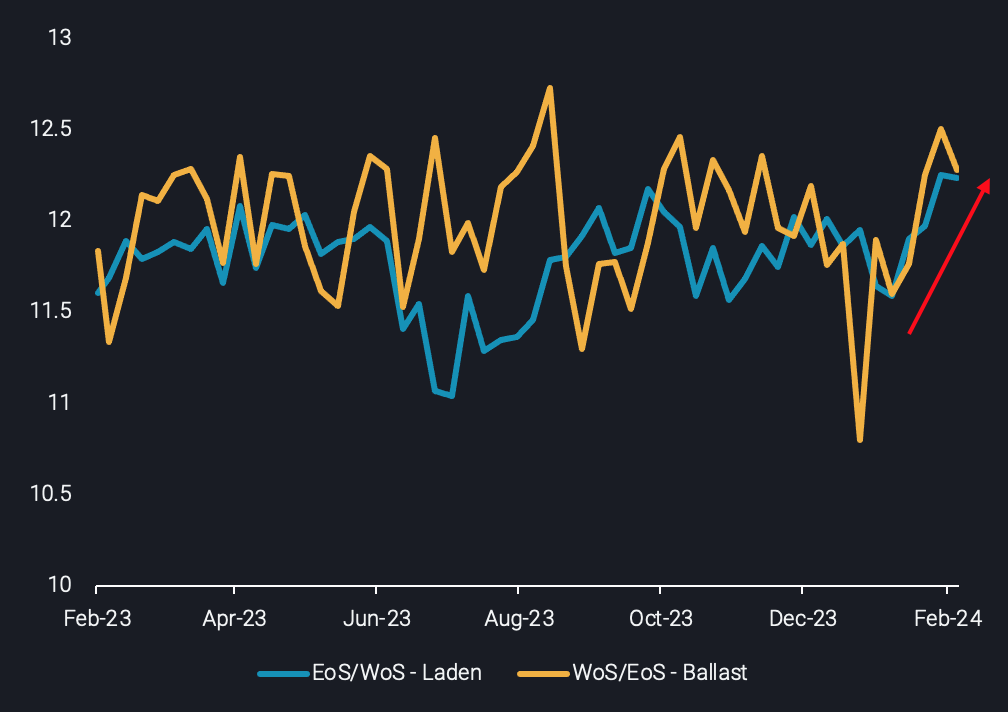Clean tankers travelling around the Cape are speeding up on both laden and ballast legs
LR2 tankers raise their speeds to exploit current market conditions but looking forward this might have significant repercussions on vessel employability in the context of emission regulations
Since the start of the new year and amidst the Red Sea attacks unfolding at higher frequency, laden LR2 tankers heading to Europe are fast-steaming. More specifically, vessels are travelling around 1 knot faster than the lowest speed levels observed in July 2023.
Due to the massive increase in voyage mileage, charterers are commanding higher speeds to bring forward arrival times of cargoes. According to our calculations, a speed increase of 1 knot could save up to 3 days in transit for a Middle East – Northwest Europe itinerary, which is significant in a backwardated market.
A similar trend is observed in the opposite direction. Ballast speeds for LR2s on the East-West route have reached a 5-month high. Shipowners are seeking to exploit historical high freight rates at a time when LR2 availability remains limited, with several operators being reluctant to operate in this market in fear of an attack.


Chart: LR2 laden and ballast speeds for East-to-West and West-to- East of Suez respectively (knots)
Unsurprisingly, the rerouting via the Cape of Good Hope in conjunction with the higher speeds has also resulted in an increase in bunkering demand. According to Argus, LSFO prices in Cape Town have increased by 25% since mid-December, breaking the $800/t barrier.
Lastly, the rise in speeds could spark interesting dynamics in the context of emission regulations which were recently introduced in shipping. Carbon Intensity Indicator (CII) ratings, which will be assigned annually to all vessels from this year (based on 2023 emissions) onwards, are mainly a function of fuel consumption and voyage distance travelled. The increase of speeds on “inefficient” voyages that are now also considerably longer in distance will likely lower ratings for LR2s operating these routes compared to their counterparts. In a scenario of a weaker freight environment where the charterer would have the luxury to choose between multiple carriers, the tanker with lower ratings would likely be at disadvantage in the selection process.